Growing up, sometimes my family teased me for being Japanese and loving Cup Noodle. But I don’t really blame them because I ate it an obscene amount (I went through a phase).
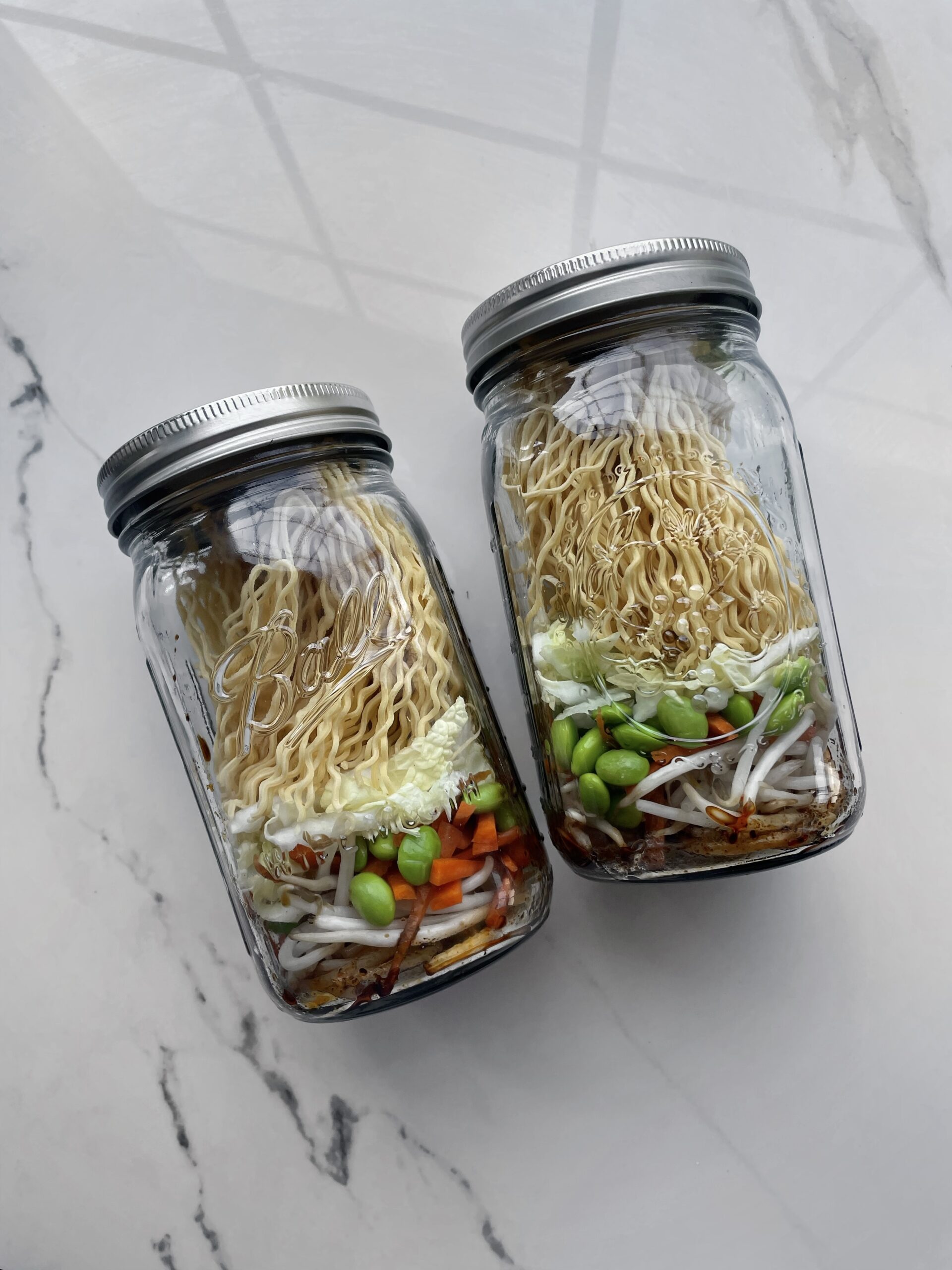
I still love me a good, classic, high-quality ramen, but sometimes it’s nice to eat some mid-tier ramen when you’re at work that’s easy to meal prep (and honestly, really good!).
My Homemade Cup Noodles (or ramen in a jar–or Tupperware) is a convenient and customizable meal-prep option where you layer ingredients like veggies, proteins, sauces, and seasonings in a container, top it with dried noodles, and then store it until you’re ready to eat.
When it’s time to enjoy, simply add hot water, let it sit for a few minutes, and you have a quick, flavorful, homemade ramen soup.

What Type of Noodles to Use
Packaged ramen noodles are typically made from wheat flour, water, salt, and kansui (a type of alkaline mineral water), which gives them their characteristic chewy texture and yellow color; they come in various forms, including instant noodles that are precooked and dried or fresh noodles that need to be boiled before use.
If you are wanting to make homemade ramen at home (that is not in a jar), here is my recipe for miso ramen. It includes other types of ramen noodles to use.
For this dish, be sure to use my recommended ramen noodles – they cook with only the addition of boiling water, and are very malleable, making them easy to squeeze into a jar or Tupperware.
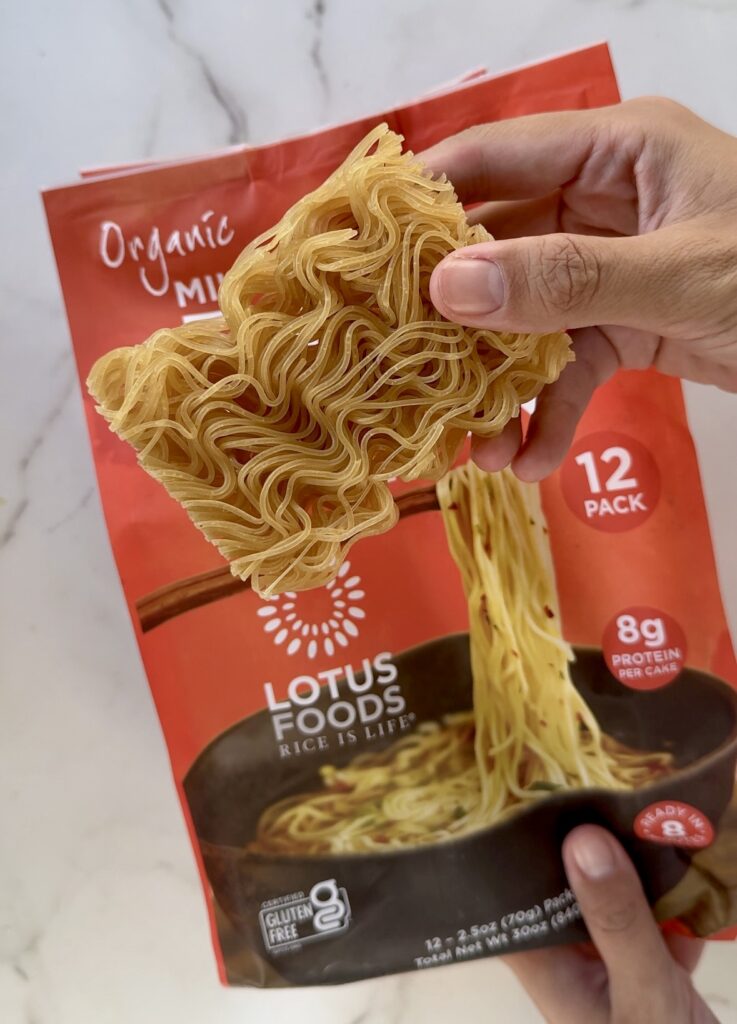
What Vegetables to Use
When it comes to building a flavorful and satisfying ramen jar, the vegetables you choose make all the difference in both texture and nutrition. I like to start with bean sprouts for their light crunch and refreshing quality, along with julienned carrots.
You’ll want to choose vegetables that either cook quickly or taste great lightly blanched (since all the cooking comes from pouring in boiling water). Cabbage (especially Napa or green) wilts beautifully, adding a tender texture.
Sweet corn adds a pop of sweetness, and baby bok choy softens just enough to become slurpable. For even more variety, toss in peas or bamboo shoots for crunch and visual interest. The key is to slice everything thinly or use small pieces so the heat from the water is enough.
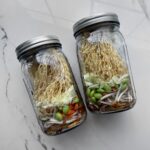
Homemade Cup Noodles
- Total Time: 10 minutes
Description
Ramen in a jar is a meal-prep-friendly dish where you layer broth flavorings, vegetables, and dried noodles in a container, then just add hot water for a quick, customizable homemade soup.
Ingredients
- 3 wide-mouth 32 oz. jars or tupperwares
- 3 tablespoons soy sauce
- 3 tablespoons miso
- 1 1/2 teaspoons ginger, minced
- 1 1/2 cups bean sprouts
- 2 large carrots, julienned
- 1 1/2 cups edamame
- Other vegetables of choice: cabbage, corn, bok choy, mushrooms, peas, bamboo shoots, etc.
- 3 servings ramen noodles (I highly recommend using the ones I linked, as they cook with just hot water)
- Chili crisp (optional; adjust according to spice preference)
- Boiling water
Instructions
- Prep each of your jars or Tupperwares to fill by removing the lids.
- Place 1 tablespoon of soy sauce, 1 tablespoon of miso, 1/2 teaspoon ginger, and some chili crisp (optional) into each of the jars.
- Divide each of the vegetables into thirds, and place each third into a jar.
- Place 1 serving of ramen noodles directly on top of the vegetables, and close the lid. Keep stored in fridge for up to 5 days.
- When ready to eat, pour enough hot water to cover the noodles and loosely cover the jar or Tupperware with a napkin to retain heat. Avoid sealing the lid tightly, as this can cause pressure build-up, especially when transitioning from cold to hot, making the lid difficult to remove.
- Allow the noodles to cook for as long as the noodle package instructs (being careful not to let it sit too long and overcook), and enjoy.
- Prep Time: 10 minutes
Nutrition
- Serving Size: 3 servings




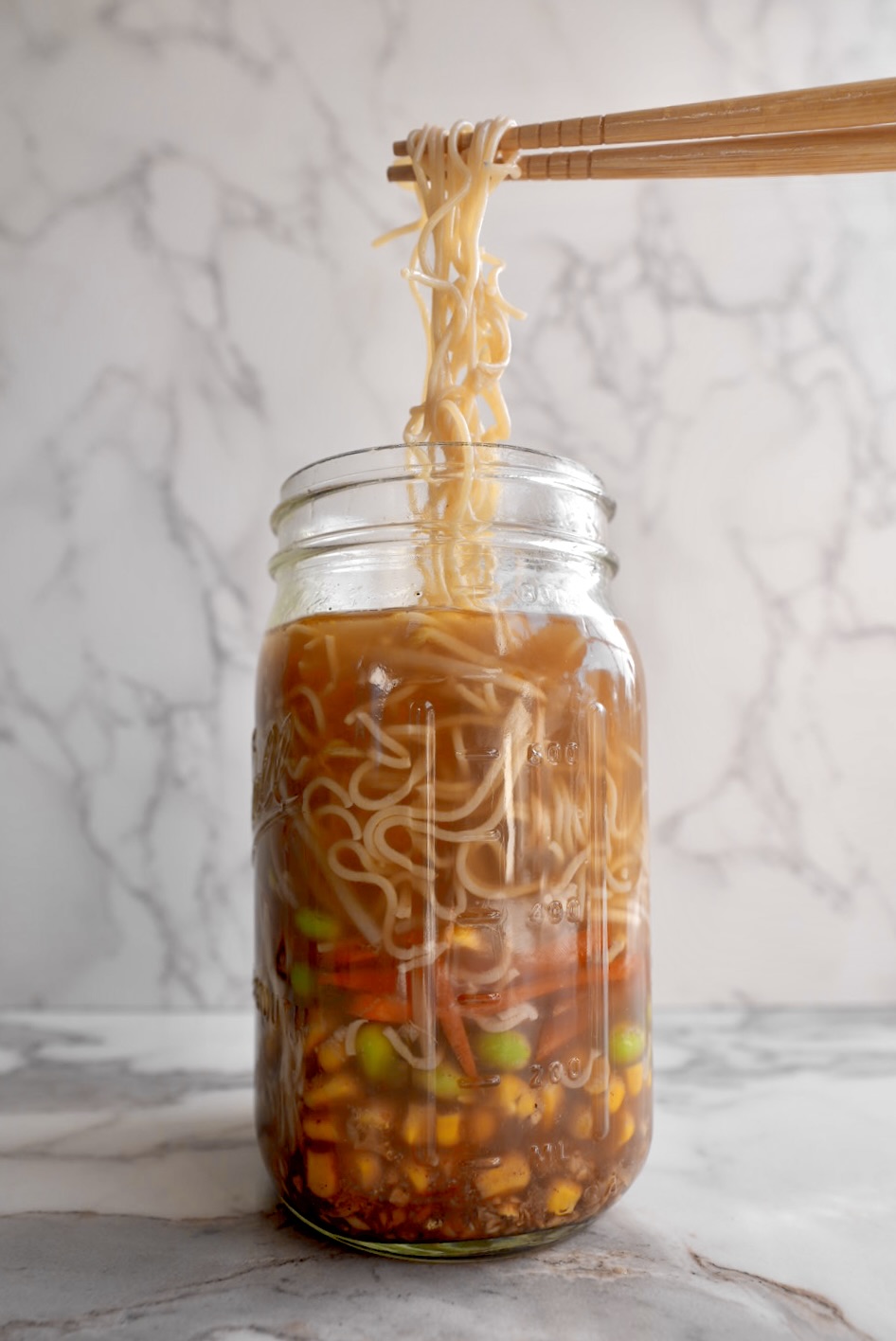
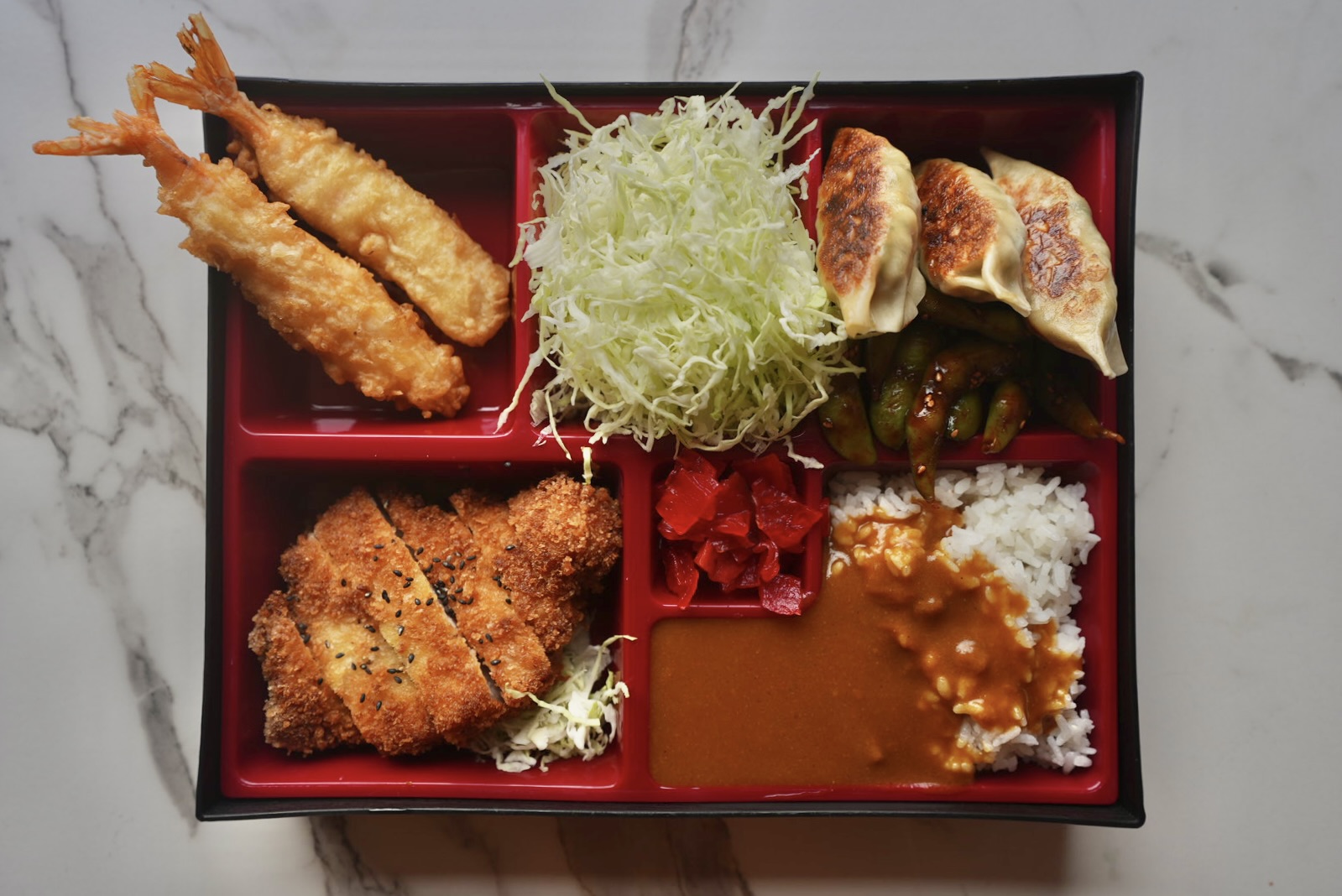
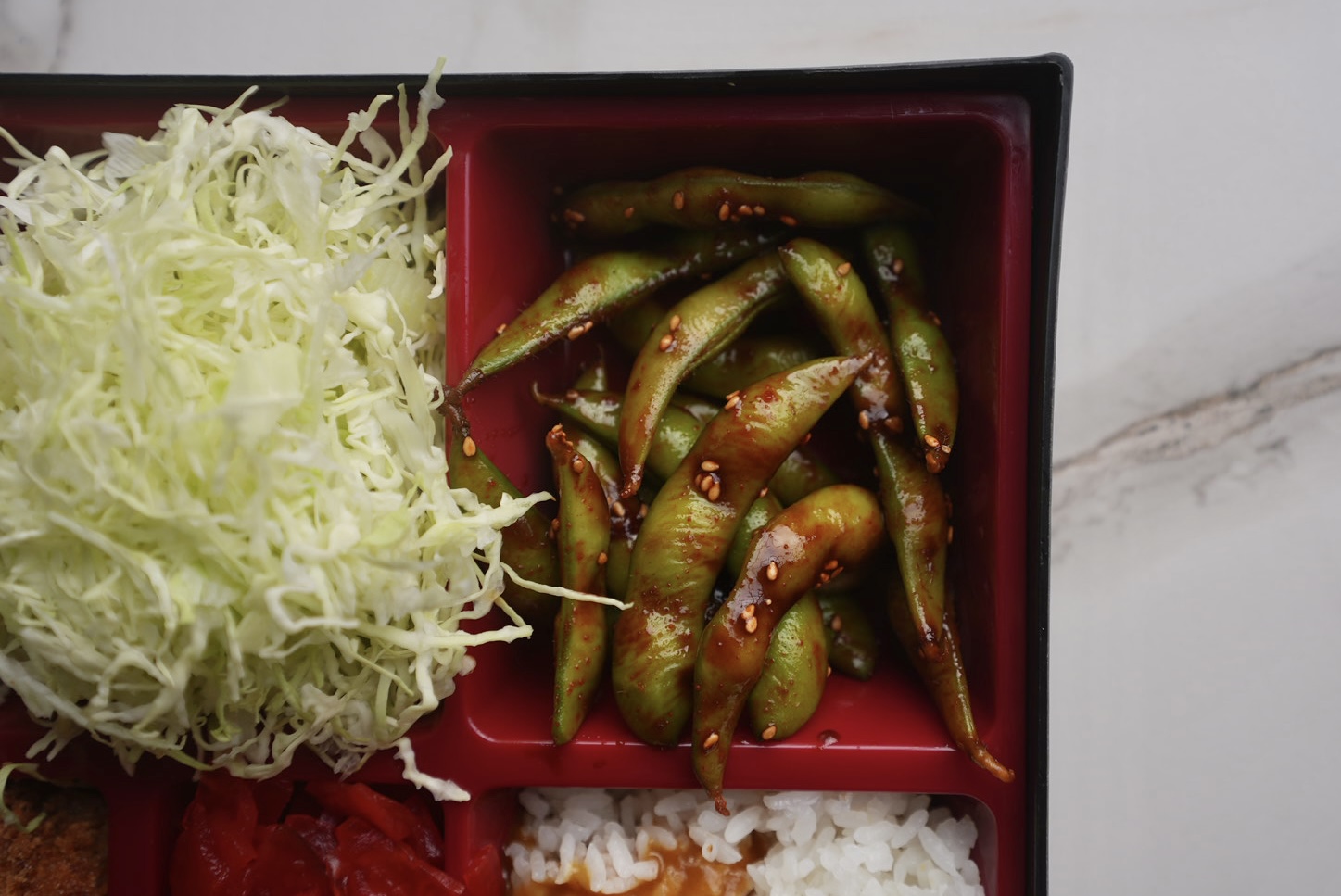
What brand of Miso, Sesame Oil and and soy sauce do you use?
For miso, most brands will do just fine. I usually find myself purchasing Shirakiku just because it’s what’s available to me! For sesame oil, just make sure that it is toasted. I love Ottogi or Kadoya. And for soy sauce, if I’m feeling cheap then I use Kikkoman. If you are fine with splurging, I highly recommend Yamaroku. Hope that helps!
So I was wondering what ramen noodle do you use. It looks pretty fresh. Is that air dried or fried?
Hi Lu – they’re from Hakubaku and you can buy them on Amazon. I have them linked on the recipe!
If I wanted to prep a few of these to have on later dates, where and for how long can these be stored?
Hi Jack! Sorry this comment somehow got lost – I’d say about 2-3 days. 2 if you’re using bean sprouts 🙂
Still can’t find which noodles you used, link didn’t show the brand.
Hi Leslie! It should be there now 🙂
What brand of noodles do you like?
Hakubaku – you can buy them on Amazon. They’re linked on the recipe 🙂
What ramen do you buy?
Hi Kellie! I recommend Hakubaku noodles for these. I have them linked 🙂
Do you happen to know of any good gluten free ramen noodles?
Hi Roslyn! I recommend using gluten-free vermicelli noodles!
This looks sooooo good!! What brand are the noodles?
Hi Nina! They are from Hakubaku! Here is a link to them: https://liketk.it/4PPno?product=e003737e-6d9f-11ef-b653-0242ac11002a
Can you please recommend some ramen noodles?
Hi Ashley! Absolutely, here’s a link to my favorite for this: https://liketk.it/4PPno?product=e003737e-6d9f-11ef-b653-0242ac11002a
Hi! Your video mentions sesame oil but it isn’t in the recipe. How much is in each jar, about 1 teaspoon?
I would say about 1/2 teaspoon! It’s not necessary, but you can definitely add it in!
What brand of ramen noodles do you use?
Hi there! I love using Hakubaku for these!
Hi!
If I want to add some kind of protein, is just a matter to put them pre cooked or something like this?
Hi Daniel, yes! I would add them precooked and place it at the bottom, right below the vegetables! Best of luck!
How long does this stay good for?
Hi Austin! I would say about 3-5 days.
Do you rinse the noodles before you pack in Tupperware? I followed your recipe and the noodles are quite gummy. Perhaps they should be stored in the fridge? Thanks!
Hi Regina, I don’t rinse them! I’m not sure why they are gummy for you, but I store them at room temperature. If you want another recommendation, I love vermicelli noodles for this!
Is there a good GF Ramen noodle you would recommend at all?
Hi Wendy! I recommend using a gluten-free vermicelli noodle. Those cook great in the jars!
amazing !! loved it, please post more :))
Thank you so much Chiara! 🙂
I love this idea! Super quick and easy prep and it actually tasted really good for such a simple meal–I added a soft boiled egg.
Thanks Marisa! So glad you tried it out! Thanks for your feedback!
I love this but the noodles are pricey for our budget. Do you have alternatives links for the noodles ◡̈
Hi Sarah! I recommend using vermicelli noodles. They’re relatively cheap and also cook really well in the jars!
How long do these keep in the fridge?
I’d say up to 3-5 days!
How much sesame oil?
Hi Tracie! Just about 1/2 teaspoon will do.
Would cucumber work or would that be too far out there for ramen?
I’m not sure if it would sit well in the ramen just because it’d get warm and mushy unfortunately!
Love this recipe!roughly what size jars do you recommend?
Thank you so much Kara! I use quart size wide-mouth jars. 🙂
This is my favorite dish to meal prep when I feel like I’m coming down with a sickness. It tastes way healthier than regular ramen and I could eat it for three days straight.
Agreed! So nice to have on hand 🙂
Customizing the seasoning gave it way more flavor than the store-bought kind.
I’m so glad to hear! The option to customize is the best! 🙂
This is great for meal prep <3 I'm definitely going to experiment more with these!
Woohoo! Thanks Lindsey 🙂